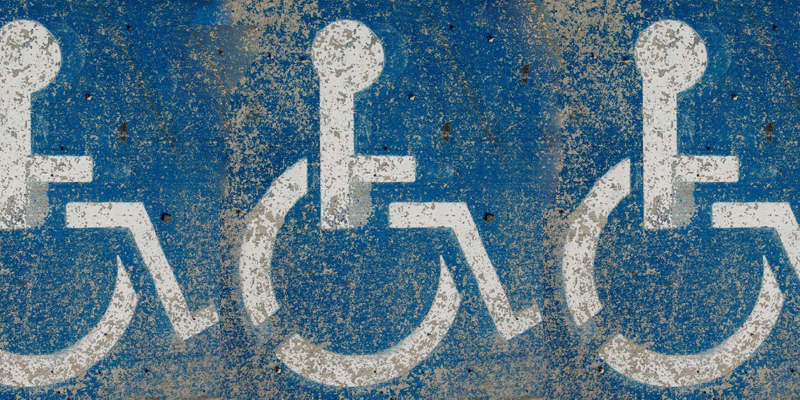
Are you disabled confused about the mess of regulations to receive your disabled parking permit? Each state in the United States has its own rules and regulations to determine if you qualify to receive one. Because of this, it can be easy to get lost in how exactly you can obtain your disabled parking permit. This guide will prove to be a useful resource for you to navigate through the exact steps to receive your disabled parking permit. Let’s dive in.
Do You Qualify For It?
Like every state, Montana has its own set of rules to determine if you can legally own a disabled parking permit. You need to understand each criterium. You must meet at least one or more of the predefined qualifications. Here is the requirement(s):
- You aren’t able to walk 200 feet without stopping to rest.
- You use portable oxygen.
- You are so severely disabled that you cannot walk without the use of or assistance from another person, prosthetic device, brace, cane, wheelchair, or other assistive devices.
- You are restricted by lung disease to the extent that forced expiratory respiratory volume when measured by spirometry, is less than 1 liter per second. Or, the arterial oxygen tension is less than 60 mm/hg on room air while at rest
- You are impaired to the extent your functional limitations are classified as either Class III or Class IV as defined under the standards adopted by the American Heart Association
- You have a disability that results from acute sensitivity to automobile emissions or from another disease or physical condition that impairs or limits or impairs your mobility. This must be documented by a licensed physician or licensed advanced practice registered nurse as being comparable in severity to the other conditions listed.
What Are The Functional Limitation Standards The American Heart Association Has Adopted?
The prerequisite about the American Heart Association’s standards is about your functional capacity. The Association has a classification for functional capacity in those with cardiac disease. Here are the Class II and Class IV functional limitations:
- Class III – Patients that are classified as Class III are with cardiac disease that has resulted in a marked limitation of physical activity. The person is comfortable at rest, and, less than ordinary activity causes fatigue, dyspnea, anginal pain, or palpitation.
- Class IV – Patients that are classified as Class IV are with cardiac disease that has resulted in the inability to carry on any physical activity without discomfort. The symptoms of heart failure or anginal syndrome may be present, even when the person is at rest. Also, if any physical activity is undertaken, discomfort is increased.
Some of these qualifications aren’t easy to determine on your own. If you have any questions about whether you may or may not qualify for one of these prerequisites, be sure to ask your doctor.
A physician, chiropractor, or advanced practice registered nurse must complete a portion of your application anyway. This is a great time to talk about which qualifications you do or don’t meet.
How To Apply
Each applicant must the Disability Permit/License Plate Application that the state of Montana provides. It’s also known more formally as From MV5.
Once you’ve obtained your application, you need to have medical personnel fill out its Part B section. This can be completed by a chiropractor, advanced practice registered nurse or physician. This is arguably the most important step in obtaining your disabled parking permit.
Once you’ve had someone complete Part B of the form, you’re almost done!
Turn In Your Application
Once the application is completed, you have several different ways you can turn in your disabled parking permit application. You can email, fax, or mail your document.
- Fax number : (406) 444-3816
- Mail: Motor Vehicle Division, PO Box 201430 Helena, MT 59620-1430
- You can also mail the document to the nearest county treasurer’s office
- Email: [email protected]
As a bonus, disability placards are free in terms of any fees required.
Once you’ve turned in your application, it’s a waiting game to receive your permit.
What Do I Do Once I Have My Permit?
Have you finally obtained your disabled parking permit? Great! Now you must make sure you’re properly using it to be able to receive all the benefits from your new permit.
Your placard or permit placement is a little more strict than most states. Some states allow you to just have the placard be visible at all times when parked in a designated area. However, in Montana, you must keep your placard hung from your rearview mirror at all times when parked in a designated parking space.
Renewals And Replacements
Permanent placards are valid for three years. On the other hand, temporary placards are only valid for six months and extended temporary placards can be issued for up to 24 months.
No matter which type of disabled parking permit you have, you must complete the application process again before the expiration date of your permit if you wish to renew it. That means another application and another Part B completed by your choice of a medical professional. However, permanent permits issued before October of 1993 do not require renewal.
Montana also boasts an easy replacement procedure if you’ve lost or need to replace a damaged or stolen placard. If you need a replacement you only need to call the Motor Vehicle Division of the Montana Department of Justice. They’ll reissue the placard free of charge and no forms are required. Their phone number is (406)-444-3661.
Conclusion
This guide provides an excellent resource for navigating your way to obtaining a disabled parking permit. If you follow each step and take care to understand the requirements, you should be on your way to obtaining your new permit in a jiffy! Remember to keep your placard visible in your rearview mirror and to not use the permit unless the owner is present.